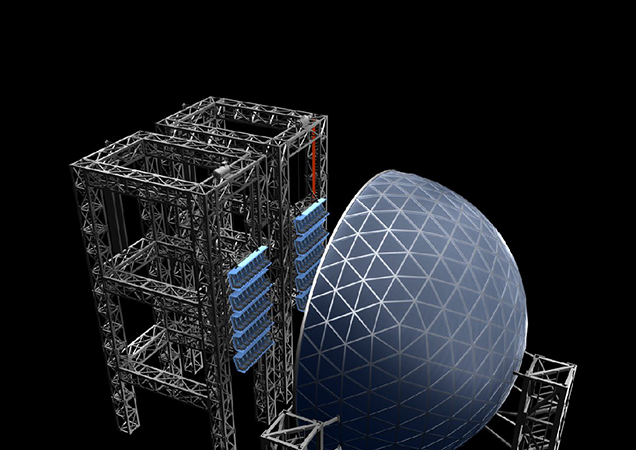Transparent LED display is a very common way of promoting publicity in the field of commercial display. We see the words and colors on the screen from time to time on the street every day, but some people will think of transparent LED display when they saw it. What is the screen made, what are the key materials, or what components they need to form. Today this essay will tell you that the LED lamp bead is the most important component in the transparent LED display. It plays an important role and is equivalent to the heart of the transparent LED display.
Life span
The theoretical life of LED devices is 100,000 hours, which is much larger than the working life of other components of transparent LED display. Therefore, as long as the LED device Quality Assurance, the working current is suitable, the PCB heat dissipation design is reasonable, and the display production process is rigorous, the LED device is one of the most durable parts in the LED screens
LED devices account for 70% of the price of transparent LED displays, so LED devices can determine the quality of transparent LED displays. China is a big country in the production of LED devices, and it is also a gathering place for transparent LED display.
The high technical requirements of transparent LED display is the future development trend. The high quality requirements of transparent LED display are not only related to the trend of transparent LED display manufacturers, but also the development of LED display device manufacturers. From the LED device checking, it promotes China's transition from a transparent LED display manufacturing power to a transparent LED display manufacturing power.
2. Attenuation characteristics
When the transparent LED display is operated for a long time, the brightness will drop and the color of the display will be inconsistent, mainly due to the brightness degradation of the LED device. Attenuation of the brightness of the LED will cause the brightness of the entire screen of the display to decrease. Inconsistent brightness attenuation of red, green and blue LEDs will cause inconsistencies in the color of the LED display, which is what we often say about the display.
High quality LED devices provide a kind of excellent control of the brightness attenuation. According to 1000 hours of normal temperature lighting 20mA standard, red attenuation should be less than 2%, blue and green attenuation should be less than 10%, so blue and green transparent LED display design should try not to use 20mA current, preferably only 70% to 80 % rated current.
In addition to the characteristics of the red, green and blue LEDs, the attenuation characteristics are affected by the current, the heat dissipation design of the PCB, and the ambient temperature of the display.
3. Size
The size of the LED device affects the pixel distance of the transparent LED display, witch means the resolution. The 5mm elliptical lamp is mainly used for outdoor display above P16, the 3mm elliptical lamp is mainly used for outdoor display of P12.5, P12 and P10, and the SMD3528 type patch LED is mainly used for indoor display of P6 and P8. The SMD5050 is mainly used for semi-outdoor displays such as P16 and P12.5.
Under the premise of constant dot pitch, the LED device size increases, which can increase the display area and reduce the graininess. However, due to the reduction of the black area, the contrast will be reduced. On the contrary, the LED size is reduced, the display area is reduced, and the graininess is increased. The area of the black area increases and the contrast is increased.
4. Perspective
The viewing angle of the transparent LED display is determined by the viewing angle of the LED bead.
At present, most of the outdoor display screens use elliptical LEDs with a horizontal viewing angle of 100° and a vertical viewing angle of 50°, and the indoor display screen uses a patch LED with a horizontal and vertical orientation of 120°. The display on the highway is generally 30° due to its particularity; a circular LED with a viewing angle is sufficient.
Some high-rise buildings require a higher vertical viewing angle. The angle of view and brightness are contradictory, and a large angle of view necessarily reduces the brightness. The choice of perspective needs to be determined which is based on the specific application.
5. brightness
LED brightness is a determining factor in the brightness of the display. The higher the brightness of the LED, the larger the margin of current used, which is beneficial for saving power and keeping the LED stable.
LEDs have different angle values. When the brightness of the chip is fixed, the smaller the angle, the brighter the LED, but the smaller the viewing angle of the display. Generally, a 100 degree LED should be selected to ensure a sufficient viewing angle of the display.
For displays with different dot pitch and different line of sight, a balance point should be found on brightness, angle and price.
6. Failure Rate
Since the LED display is composed of tens of thousands or even hundreds of thousands of red, green and blue LEDs, the failure of any color LED will affect the overall visual effect of the display.
In general, according to the industry experience, the failure rate before the assembly of the LED display to the aging 72 hours before shipment should be no more than three ten thousandth (refer to the failure caused by the LED lamp itself)
7. Antistatic ability
LEDs are semiconductor devices that are sensitive to static electricity and can easily cause electrostatic failure. Therefore, antistatic capability is critical to the life of the display. In general, the LED's human body static mode test failure voltage should not be lower than 2000V.



































































